Today, I’m working on a ficus microcarpa.
I originally got the tree from Jim Smith as a stock plant.

I picked it out because it had really good taper (still does I guess) and I didn’t have to chop the trunk.
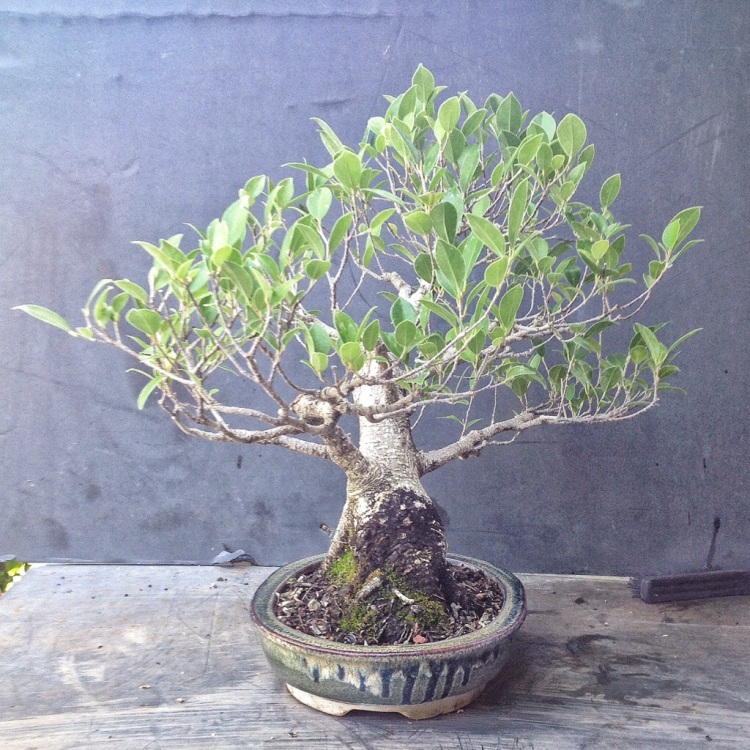
I don’t think I’ve shown this tree on the blog yet but if I did and you find the post, let us know.

You’ll notice that I almost always call these trees “ficus microcarpa” and not any of the many common names (tiger bark ficus or Chinese banyan) or any of the older Latin names either (ficus retusa or ficus nitida).
It’s more clear for me to use the current name than try to use the common or old names.
I did a search for synonyms and came up with this list:
Ficus aggregata
Ficus cairnsii
Ficus condoravia
Ficus dahlii
Ficus dyctiophleba
Ficus hillii
Ficus littoralis
Ficus naumannii
Ficus nitida
Ficus regnans
Ficus retusa
Ficus retusiformis
Ficus rubra
Ficus thynneana
Urostigma accedens
Urostigma amblyphyllum
Some of these names are now classed as a variety of f. microcarpa instead of a distinct species.
When I first styled the tree I did cut out one big limb and there is a scar from it.


I’m not so sure of this branch still:
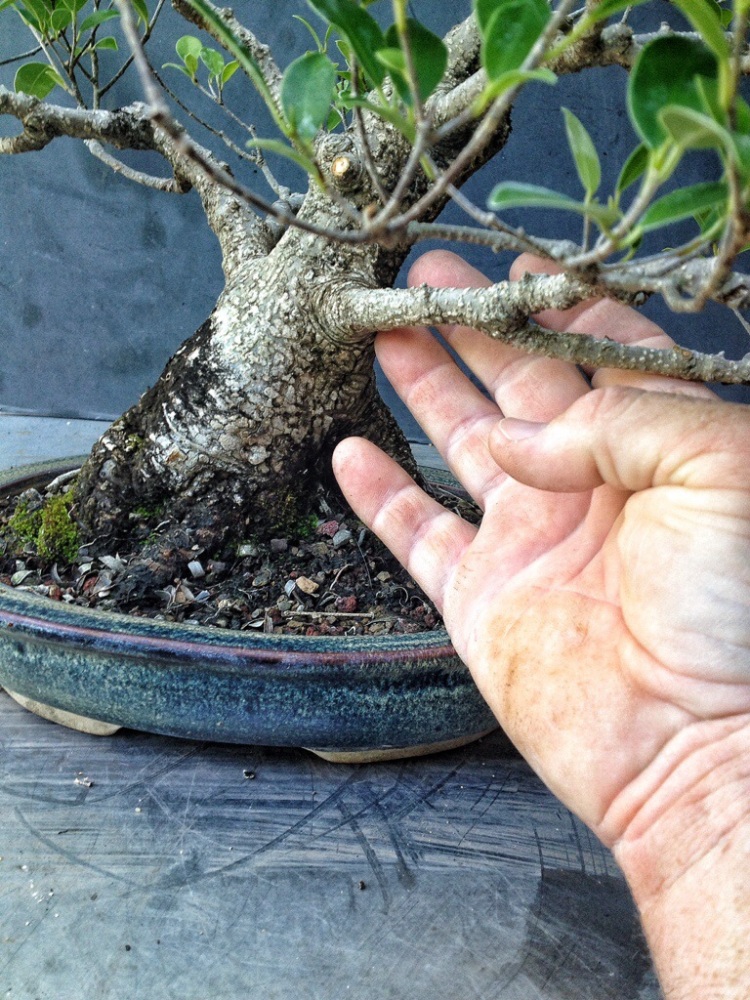
It’s coming from the front right; it’s a little too much in front and not enough right than most people think is appropriate, and the structure is odd.
I’ve kept the branch for the two years I’ve been working the tree, I’ll keep it for now.
The one mistake (so far) I’ve made was, last year, to put it into this too-small a pot.
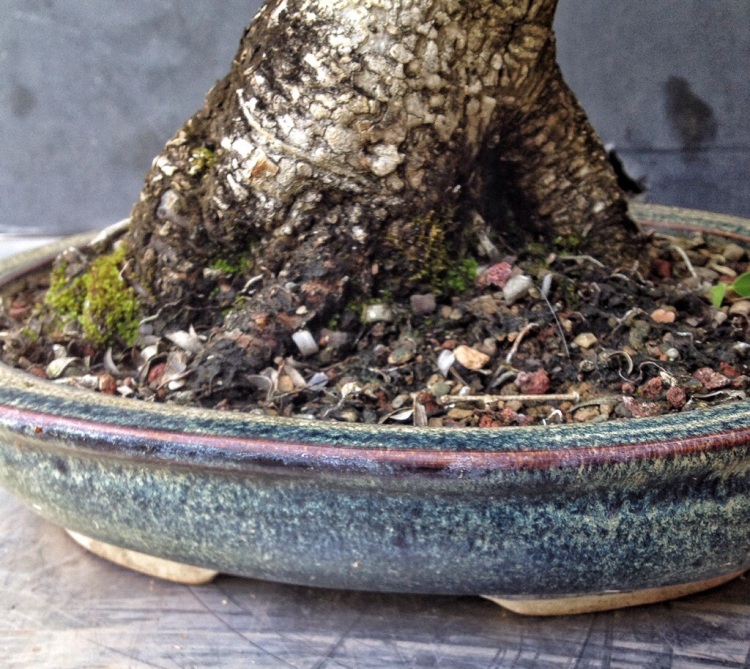
The depth is ok, putting a ficus in a shallow pot is actually a good way to improve surface roots (if you’ve gained the trunk girth you are looking for….that’s another post though) but the mistake is that the pot isn’t wide enough.
The width allows the roots to grow laterally and improve.
I’ve unwired it already.
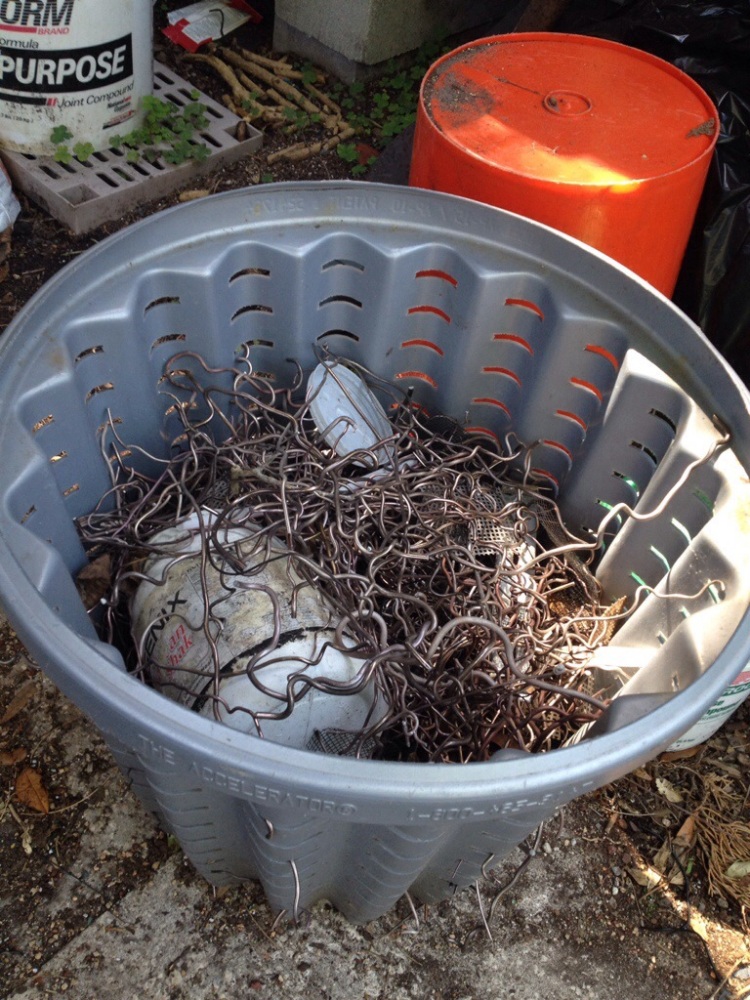
Actually, I unwired it sometime before winter (it’s April in Florida now).
Taking into account that when I removed the wire, I defoliated it at the same time, the best reason for a wider pot is the lack of growth that occurred on the tree last year.
These are the leaves:

Here is a comparison of a tree that was allowed to grow unrestricted:
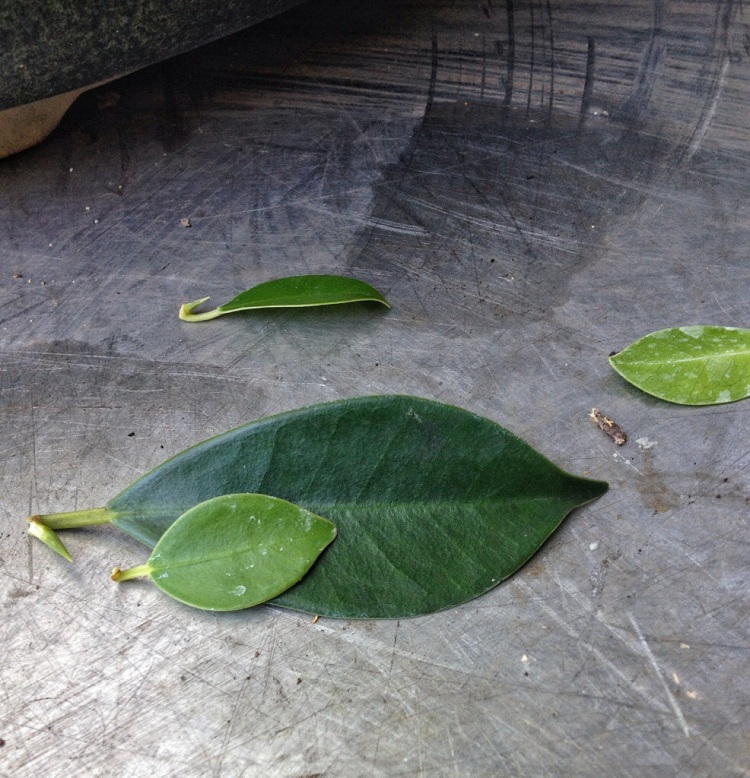
This tells us two things: you can reduce the leaves quite a bit on this tree and, it’s probably not a good idea to defoliate in December.
It’s April though.
It’s scissor time!

We defoliate for a few reasons:
First, the obvious reason is to reduce the size of the leaves.
The way this works is purely a horticultural exploitative technique.
Think of the leaves as though they are solar energy panels.
The tree only needs so many square inches of these solar panels to accomplish the required photosynthesis to feed itself.
When you cut the leaves off, the plant responds by trying to grow those solar panels back as fast as it can.
It will therefore push as many leaves out as it can and you end up with twice as many leaves but, since the tree needs only that certain number of square inches, the leaves will be half as big (give or take).
The second reason we defoliate is to make it easier to see the structure of the tree when styling and to make it easier to wire.
A third reason is to make it easier to treat disease or an insect infestation.
Regardless of the reason I should note that we defoliate only when the tree is healthy enough to support it.
Anyway, it’s time for the leaves to leave.
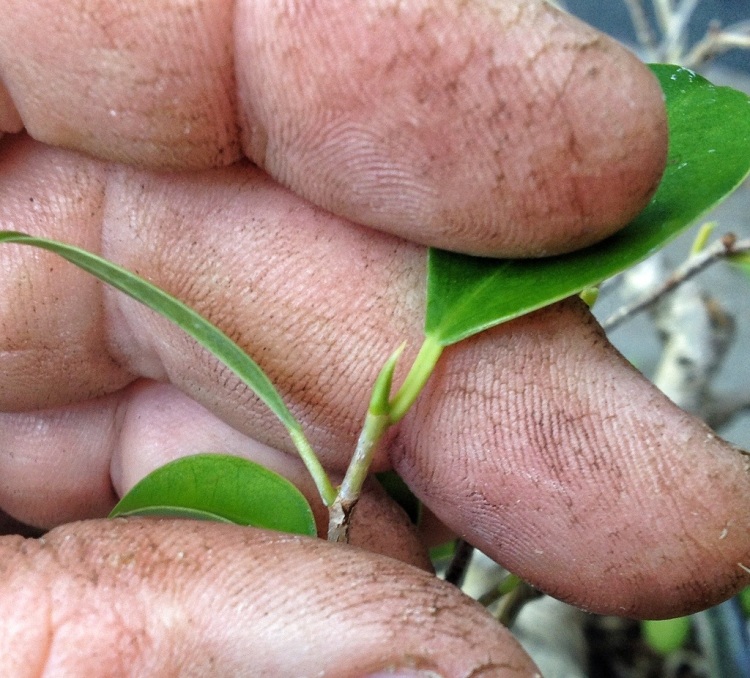
See that pointy thing at the end of the branch?
That is the terminal bud.
I like to leave them when I’m defoliating and then wiring.
A fourth reason to defoliate is to get the sun into the interior branches and try to increase ramification and back budding. In that case I will trim the terminal bud.
I’m leaving them here to get the branch to elongate and, in that, get thicker so that the branch sets with this wiring.

Damn that’s a lot of branches.
The only wiring that was done were on the primary branches.
As you can see by the lack of wire scars.

The next pics show you another ficus I defoliated and wired about two weeks ago.
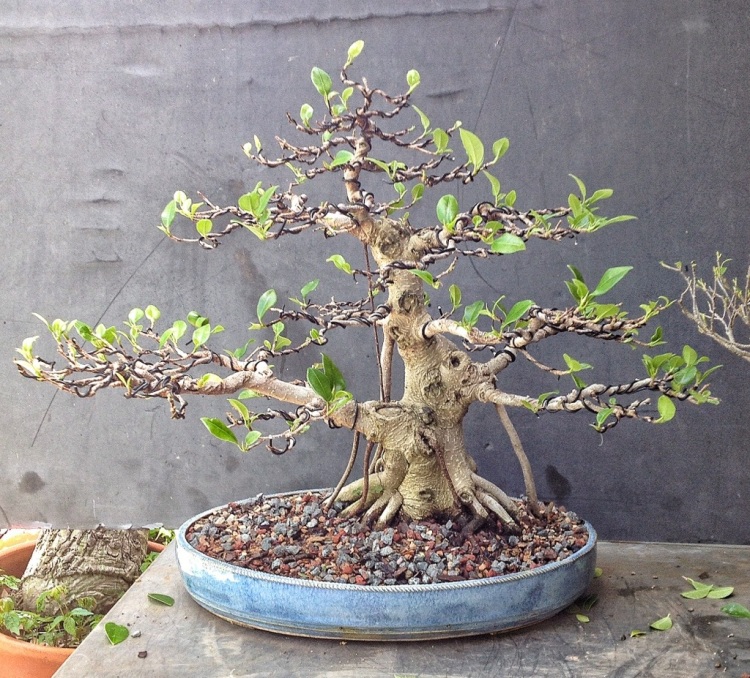
This was how it looked when I defoliated:

And now:
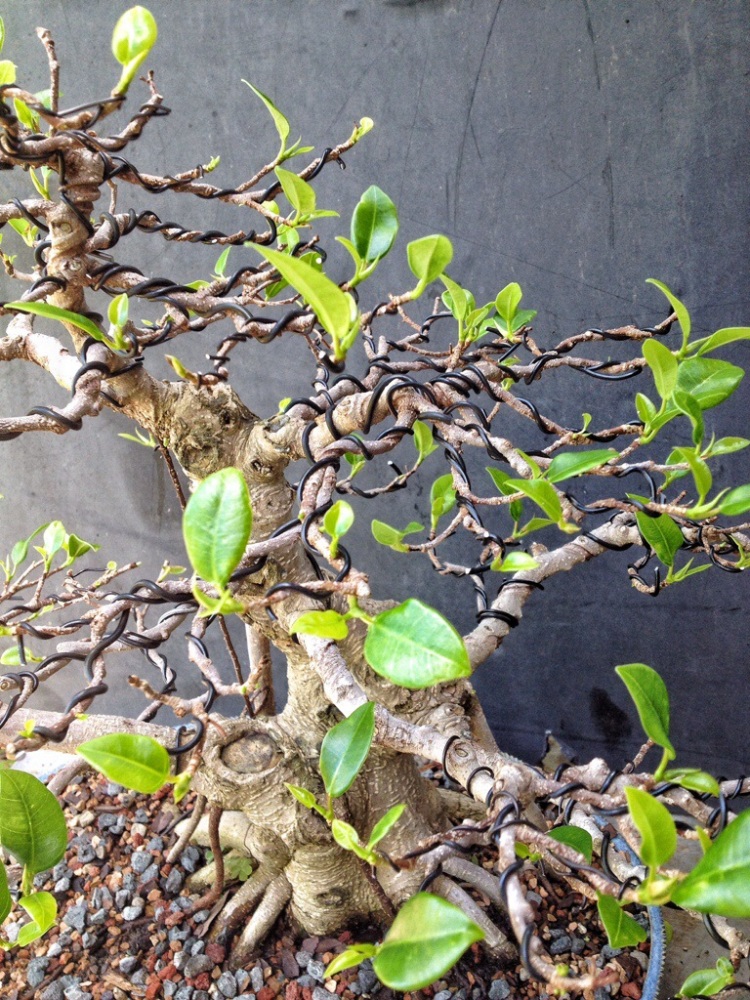
Pretty good growth.
I did not repot this second tree though. Sometimes repotting a ficus accelerates the growth. Sometimes not.
Warmer night temps make a difference.
Last week we had a 45 degree night here in Orlando.
Fingers crossed and prayers to the bonsai gods.
Let’s tackle the roots.


You can see how snug I had the tree shoehorned into the pot.

There was still good root growth, just not enough because there wasn’t really a lot of room.
But there’s lots of legroom in this pot.
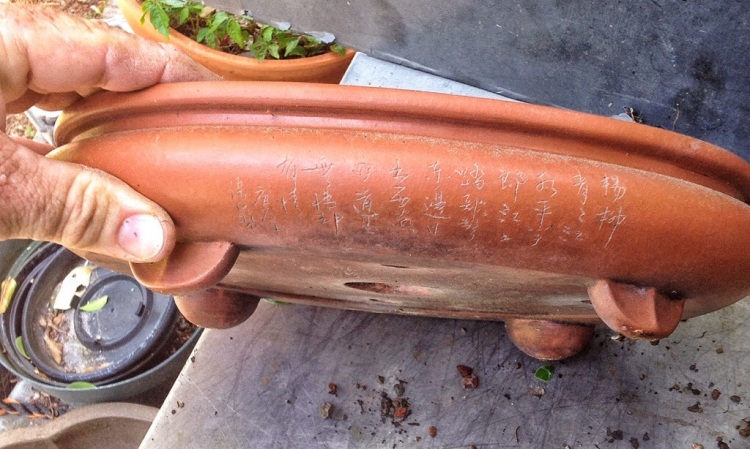

And lots of drainage.
It’s chopped too.

Don’t ask me what it says.
The blog for that is japanesebonsaipots.net (click here). Tell Ryan I sent you.
I think it’s a nice fit for the tree.
Looking good-
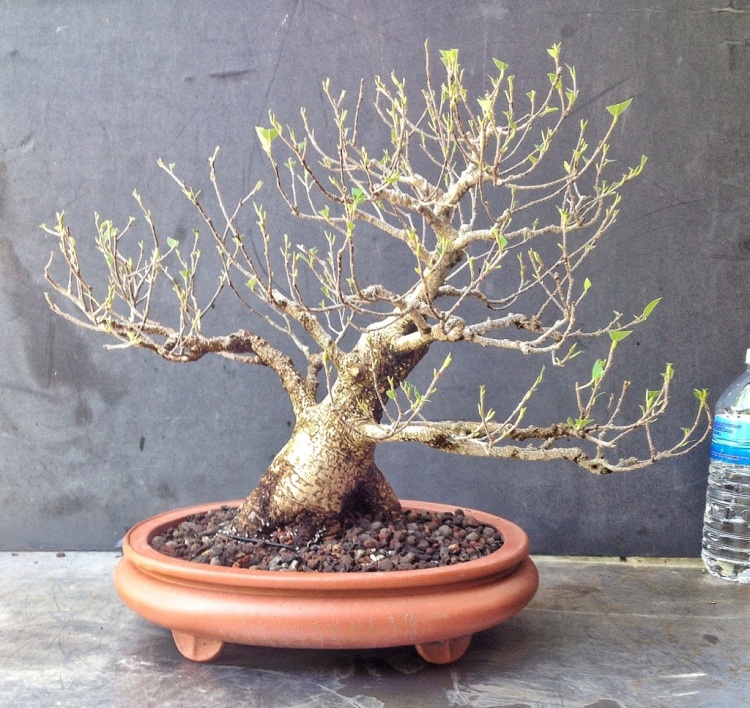

Comparing the pots side by side you can see they’re both shallow but the orange one is much wider.
I’m very pleased so far.
I’m experimenting with a soil component called LECA, which stands for Lightweight Expanded Clay Aggregate.
It was developed for the construction industry as an additive to concrete (replacing rock) to make the end product lighter.
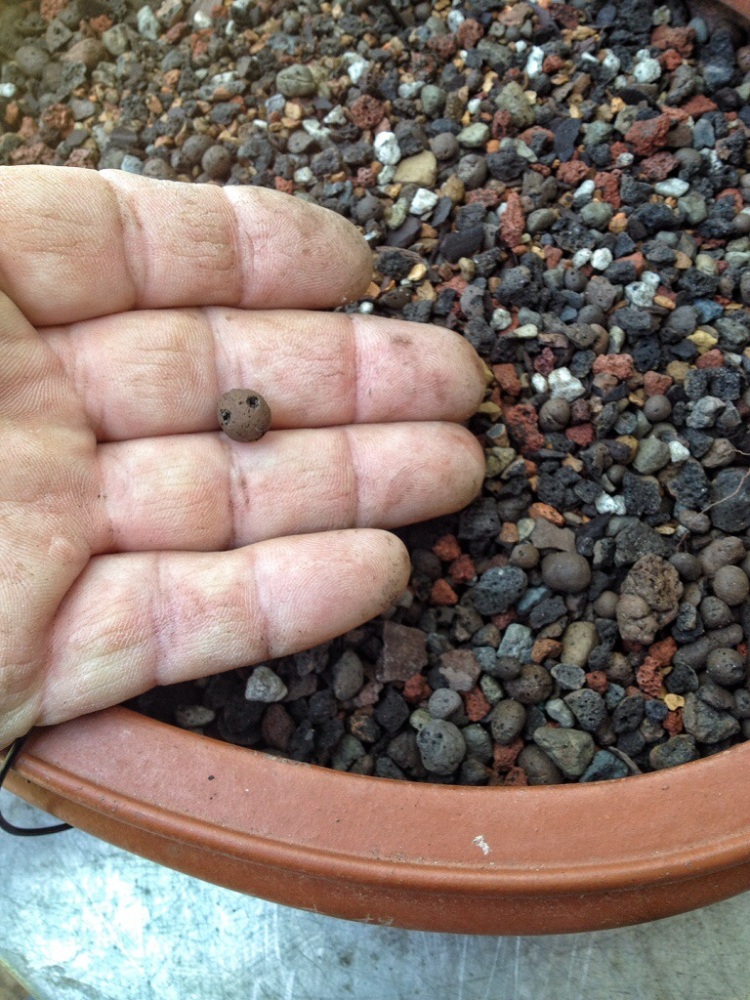
It’s been adopted for use in the hydroponics field as well and some bonsai enthusiasts have been using it too.
It holds little water and has no CEC (although it’s clay, which has a high CEC, this product is so highly fired it’s almost like glass or scoria).
CEC is the measurement of soil components ability to hold onto nutrients and have them available for the plants use.
Organic material has the most CEC (in the 100’s) and clays (akadama, calcined clay) have the most of all inorganic materials (in the 30’s).
Diatomaceous earth also has a fairly high CEC.
The reason I’m trying it here is to increase drainage.
I believe that I’ve stunted the growth a bit on this tree and I’m trying to make amends.
A small, shallow pot stays too wet, and wet trees don’t grow roots searching for water, and when the roots don’t grow, the top doesn’t grow.
This aggregate will definitely drain well.
And now, do you know what time it is?
It’s time to wire!
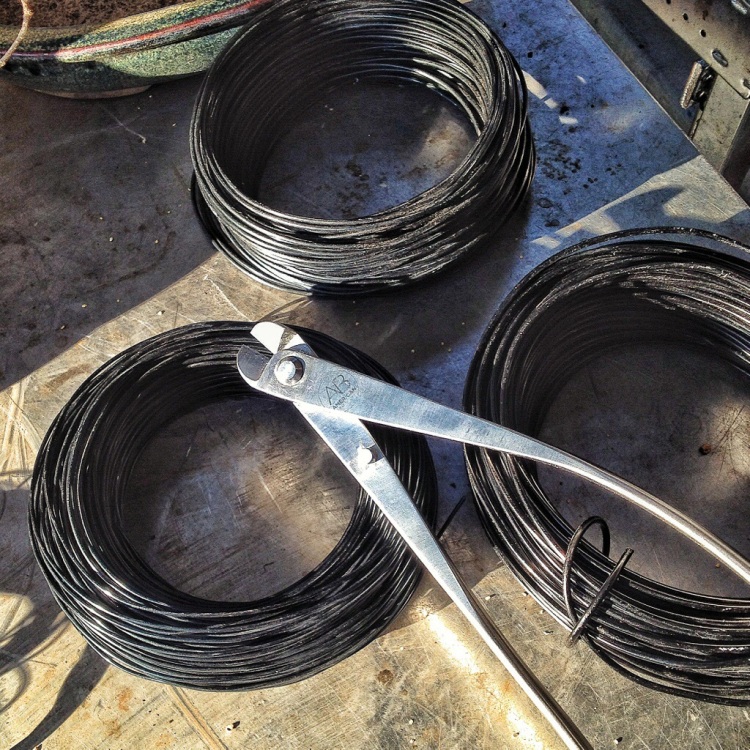
Here are some dramatically lit, establishing shots for reference.
Left branch
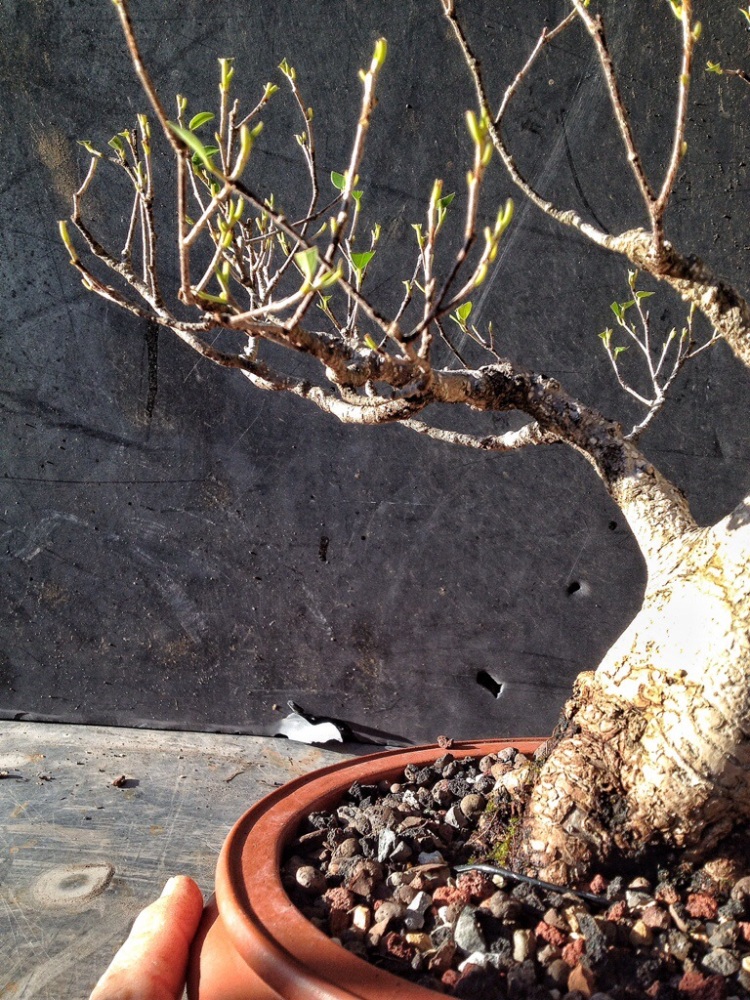
Right branch
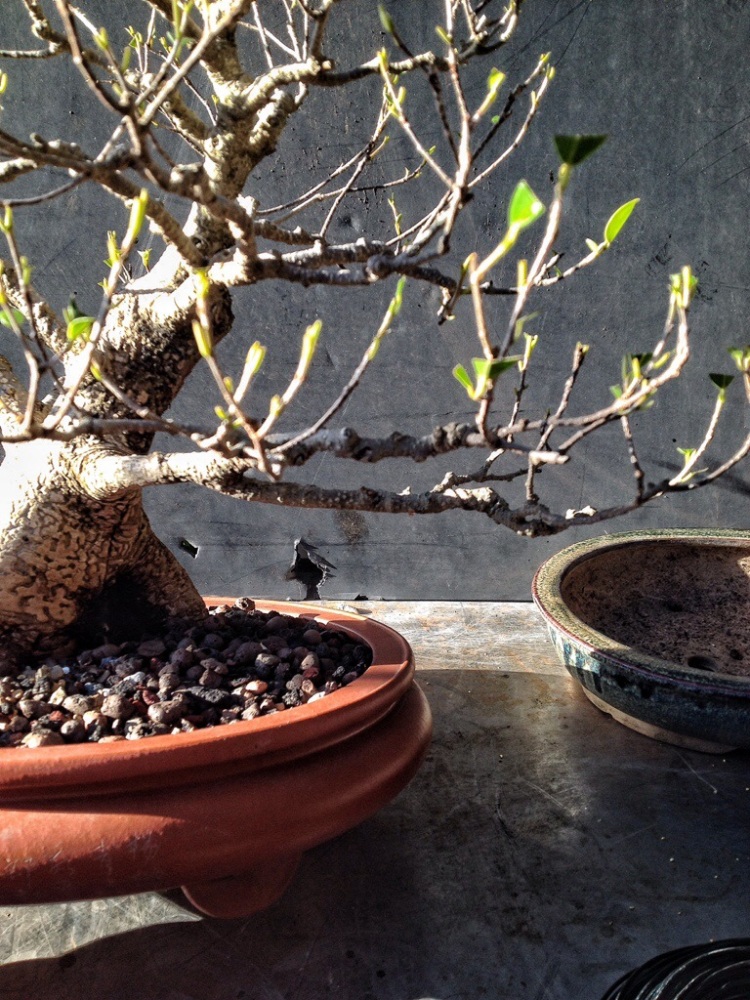
Top
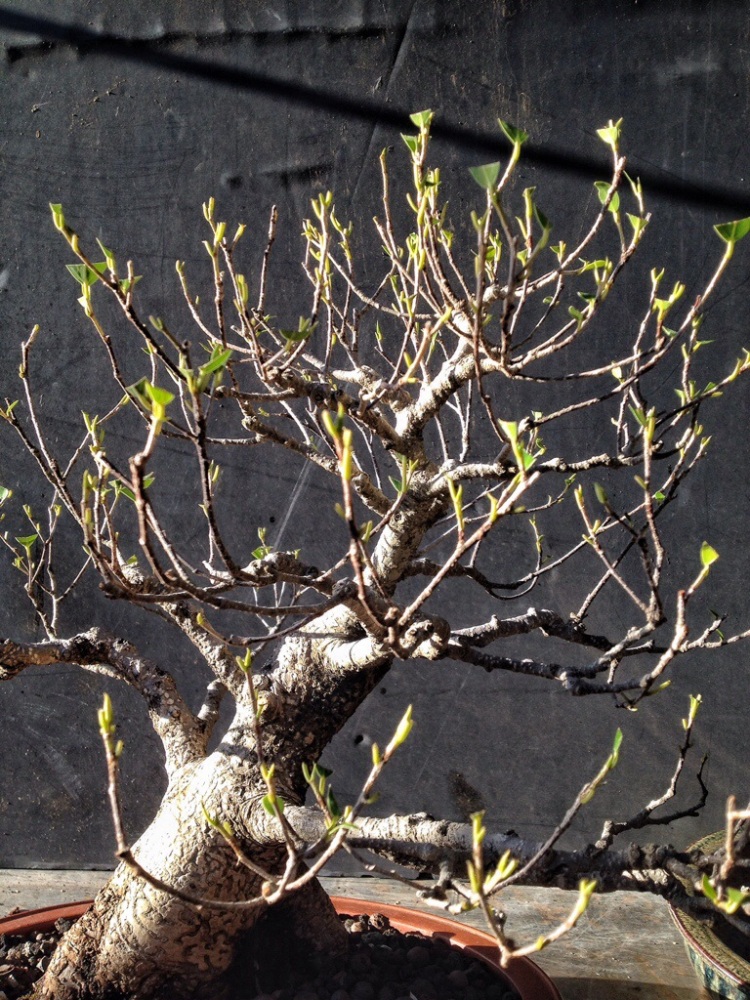
I’m using that new black aluminum wire. Not sure I like it, it seems stiffer than what I’ve used in the past.
The black color is somewhat controversial too.
It’s highly visible.
Makes for good pics on a blog post where the seeing the wire is important but maybe not so good for showing the tree in a display.
Left branch wired-

Top view
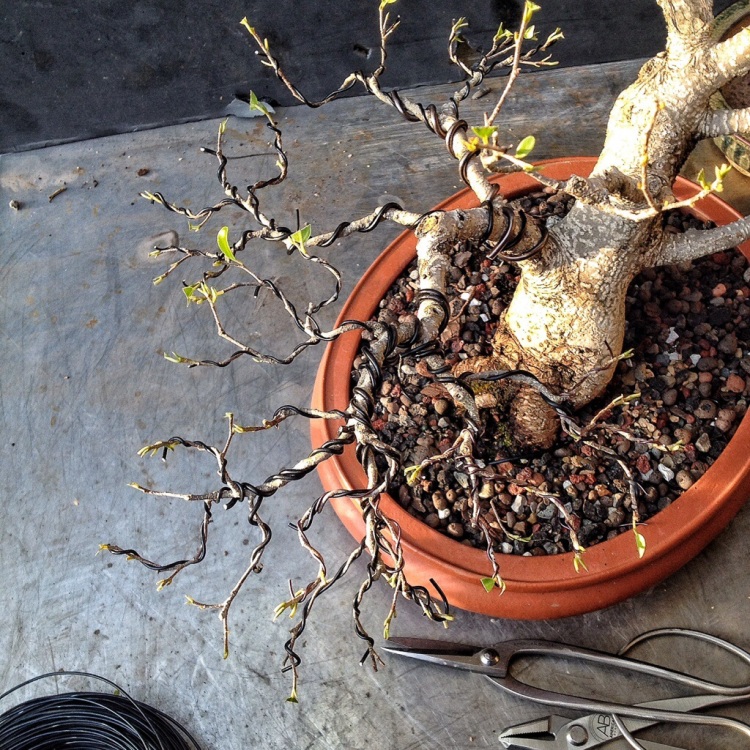
What’s funny on the structure of the blog posts compared to the actual work on the tree is that when I get to this point in the narrative, the story goes quickly, with very little words.
In reality, it takes longer to wire than all the other stuff combined.
It took about 3 hours to wire the whole tree.
Like I said, it has a whole lotta branches.
Right branch
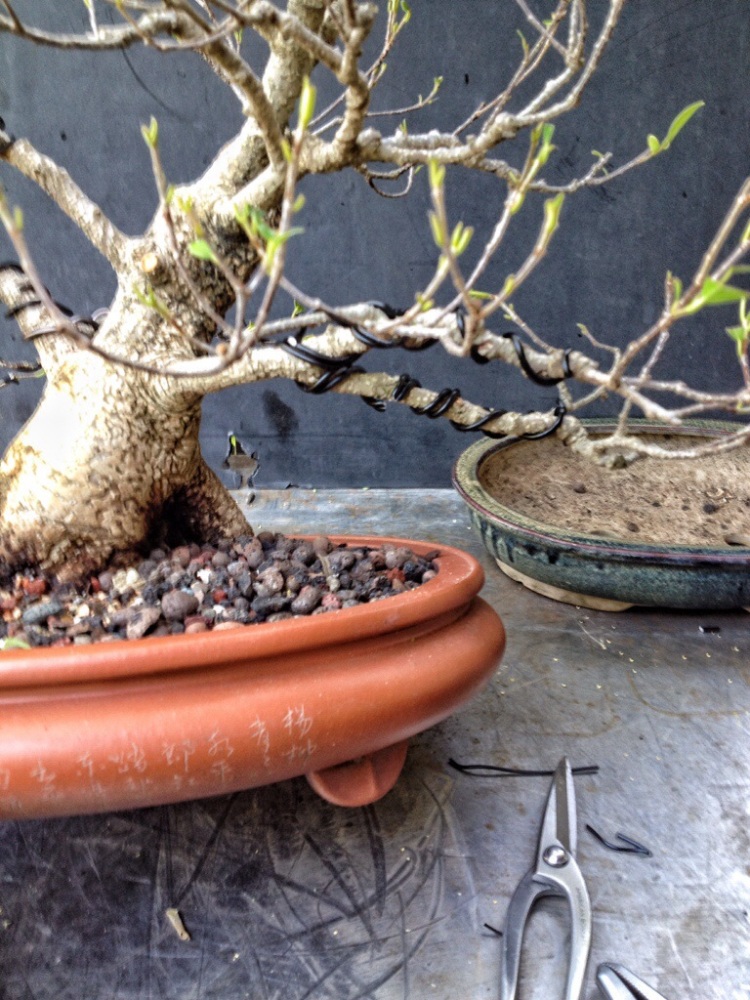
Snap!!?!
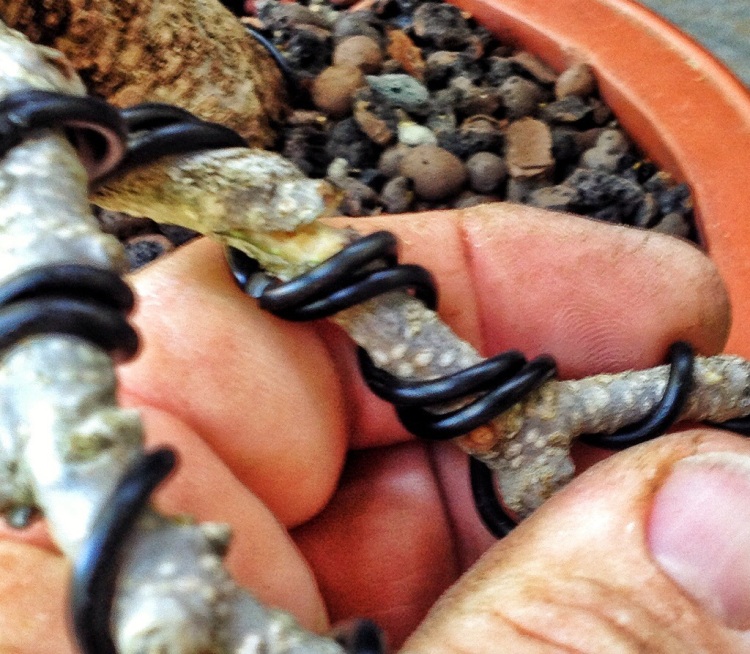
Damn….it’s ok, I’ll use this as a teaching experience.
The branch I broke was not in a good position so I tried to bend it up.
That’s when I broke it.
If I cut it and leave a stub…..

…chances are I’ll get new shoots at the base of that nub and at least one (and one is all I need) will be in a good spot.
Onward!!
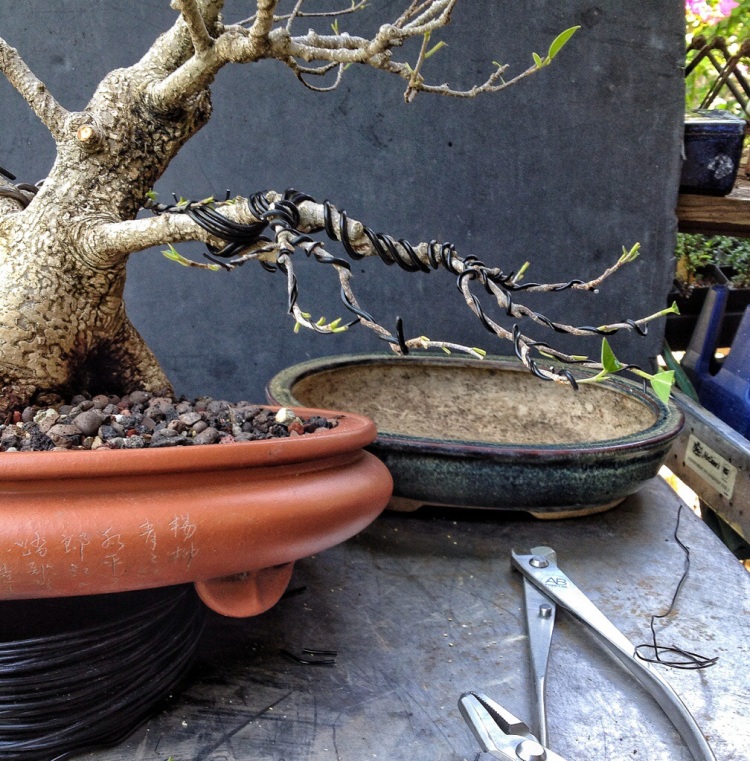
I think it looks better without it anyway.
Halfway done.
It doesn’t look like there are enough branches to pull it off, does it?
Ye of little faith!

The top!
Finally!

Here’s the side view:
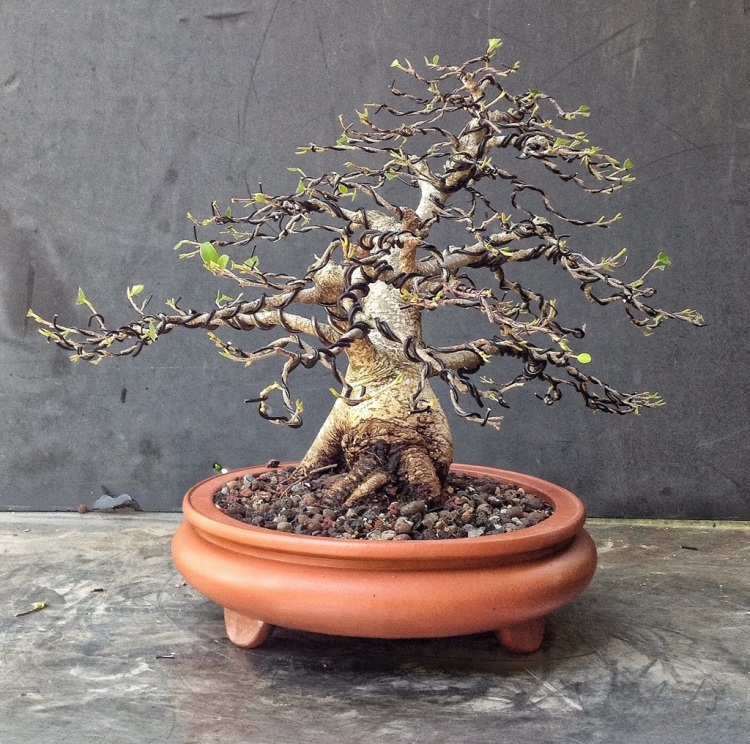
The other side:
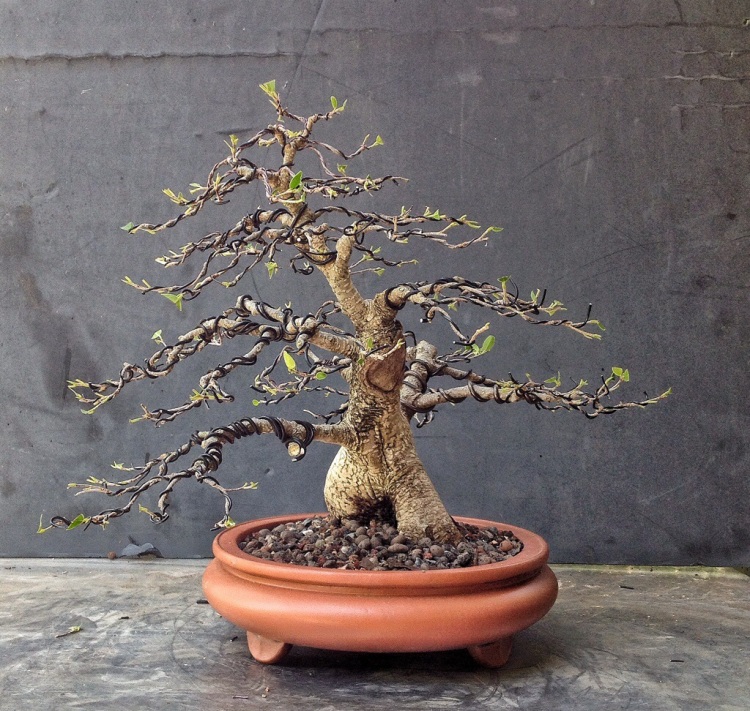
The back:
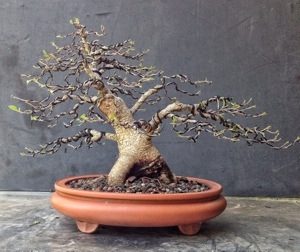
The top:
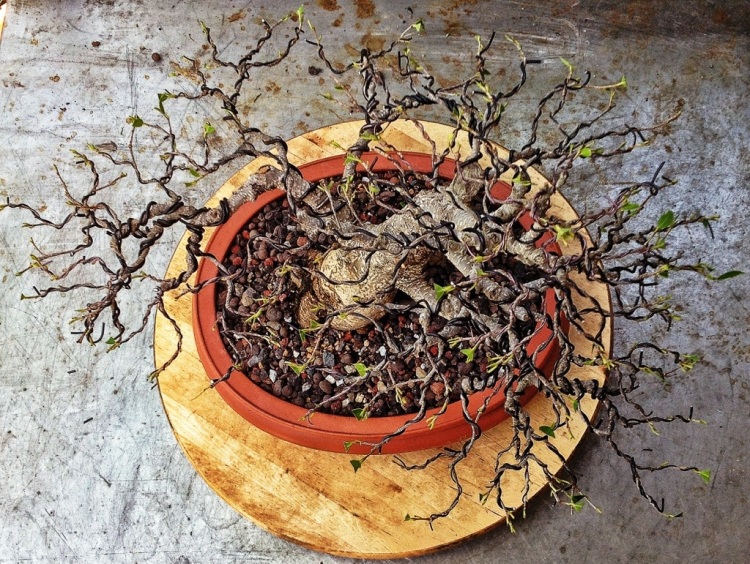
The before:
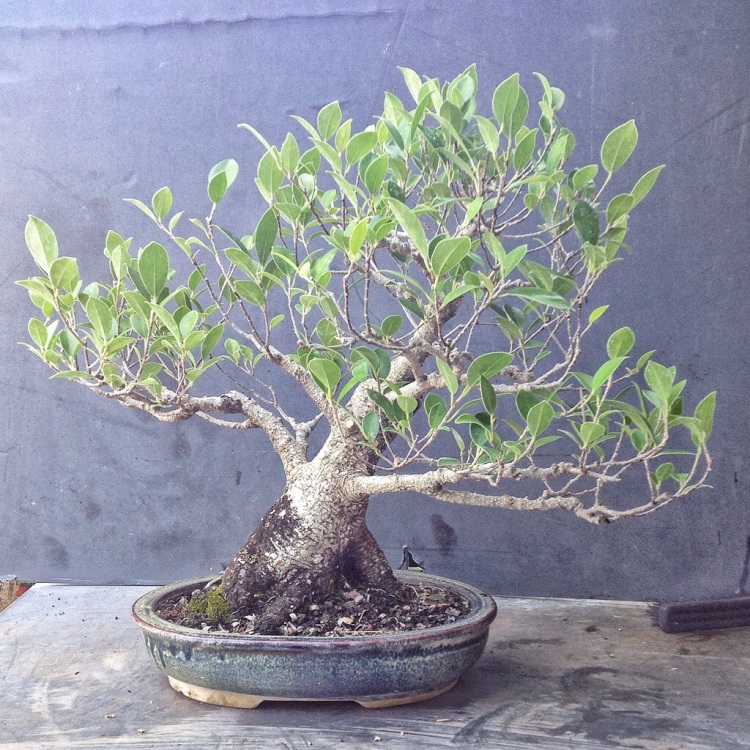
And the after:

For a short video showing a full 360 view, click here
Ignore the goofiness.
Now, I know it looks like I wired every branch but I didn’t.
I left one alone.
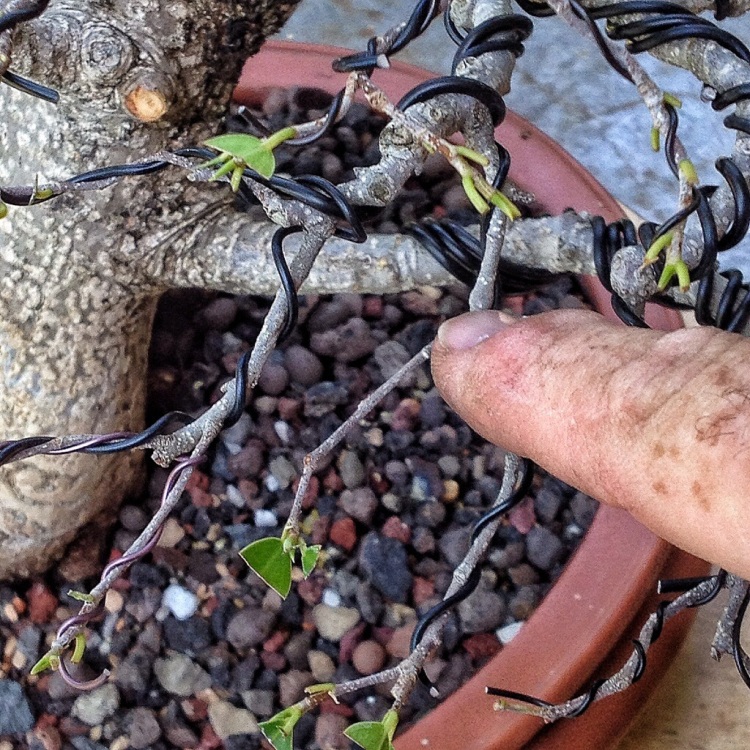
I’ll tell you what, that’s hard work, especially when the sun starts pouring into The Nook:
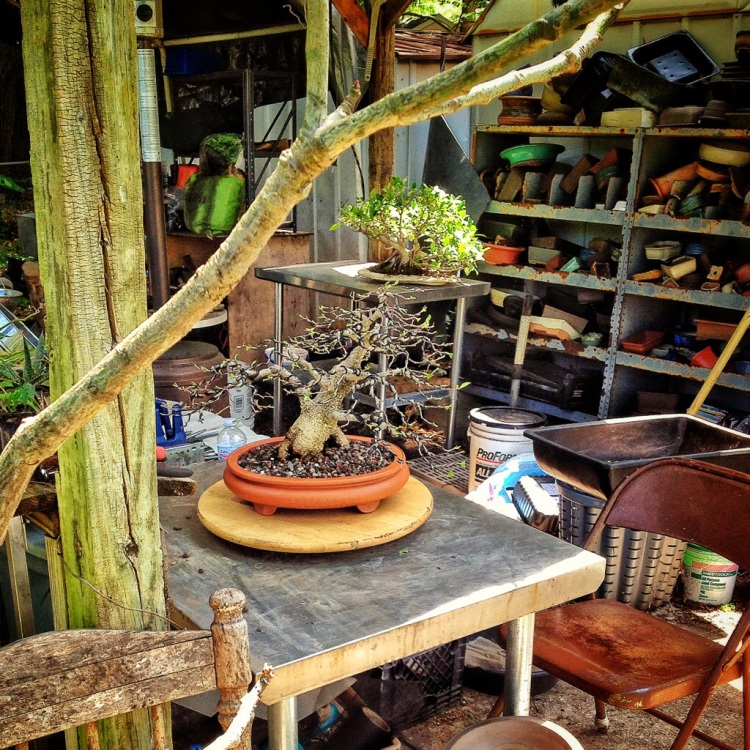
I think it’s time for a beer.
Or something stronger.
Looks really good Adam, great before and after. I snap branches while wiring too!
LikeLike
I love it, amazing job!!
LikeLike
Hey Adam, I just want to send a thank you from London UK. I’m getting back into bonsai after a long break following the massacre of my collection when I went travelling a few years ago. Now I’m older and wiser and finding your blogs as entertaining as they are educational. I find it easy to feel inspired when reading your posts and felt compelled to say thanks for all of it mate, the pics, the giggles, the whole lot!
Cheers,
Craig
LikeLike
Thanks for the constantly informative and entertaining blog posts. I had never heard of CEC before now, that’s really good to know about =)
LikeLike
Adam, have you had any luck with trying to save a branch, once it’s been broken? If so, will that always be a weak spot? Thanks – enjoyed the presentation and new information — *nice tree*!
LikeLike
I’ve tried to save them before and in my experience, on a big ficus branch like this, there will always be a weak spot.
LikeLike
Hello adam, thank you for the highly informative and well explained post,I have a question though sort of an intuition . why wire the plant (to modify it shape it noticed its branches are flexable?) if so then how long before it fixes in the desired spatial configuration and can take wires off ?
__ I live in a warm climate and I put my plants in direct sunlight with water retaining pots (it grows really well) though i havent had a long time to learn as the rest of the people on here (i accidentally bought tree plants because i liked their leaves just a few months ago) but i liked it so will continue to grow it. And do keep sharing your experiences.
best wishes and regards …
LikeLike
Hi Dr. Umar
The reason we wire is to manipulate the branches to make them appear older than they are. An old tree has branches that are more horizontal (from the pull of gravity) and tend to have a more twisted, gnarly movement to them.
And the only answer to how long they stay on is to say as long as it needs to. Each tree is different. They should be removed when the branch starts to grow around them but they may need to be reapplied again, especially on a ficus.
LikeLike
We were given one of these trees at the end of the summer. It is more than a metre around its trunk and was about four feet tall. It had been in a derelict green house, unattended for more than a year . It had few leaves and it was a miracle it survived. I saw this article and it is inspiring me to return this tree to its former glory. We built it a heated shelter, cut it back a bit and it’s doing well. Thank you. Susie (England)
LikeLike
Reblogged this on Wolf's Birding and Bonsai Blog.
LikeLike